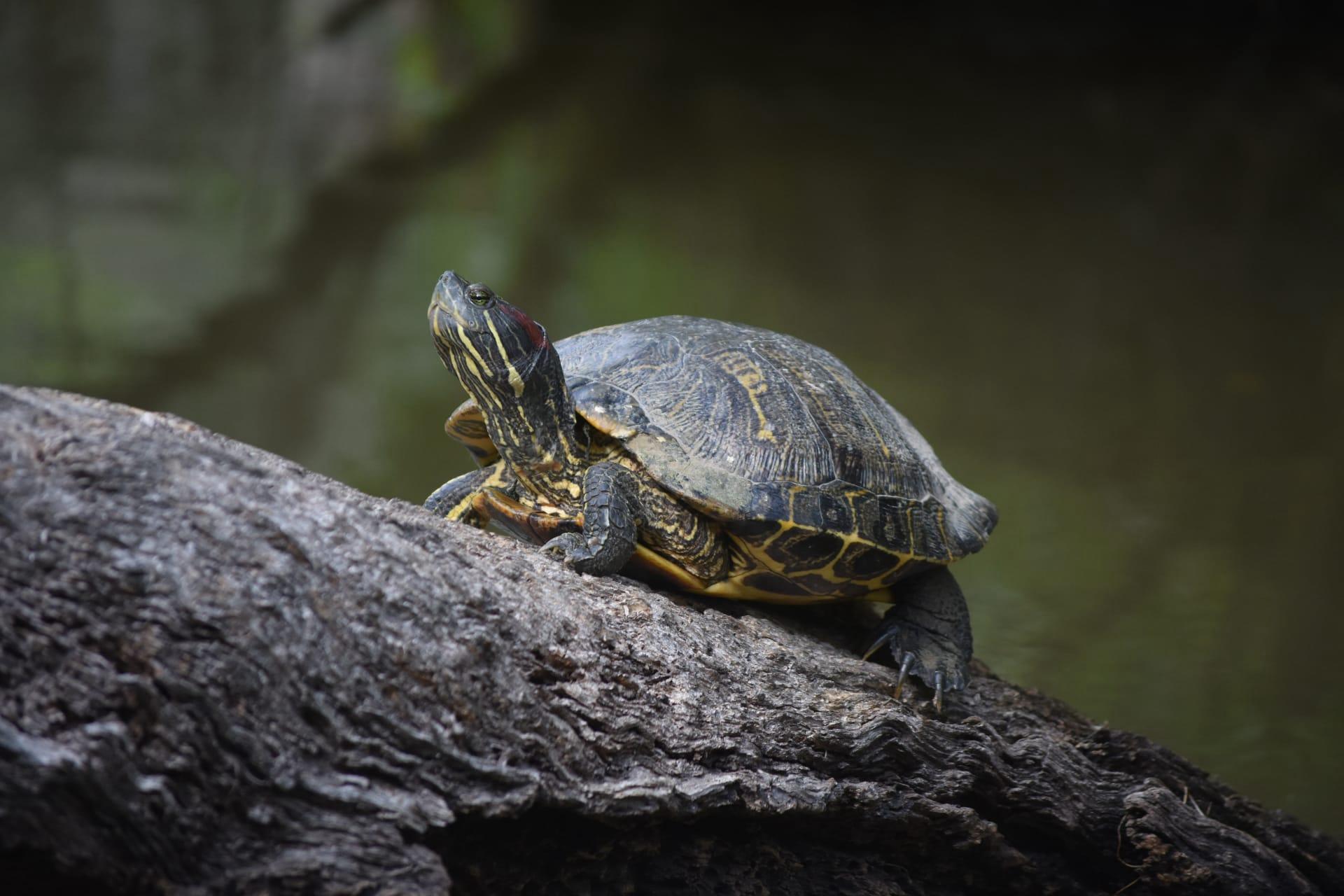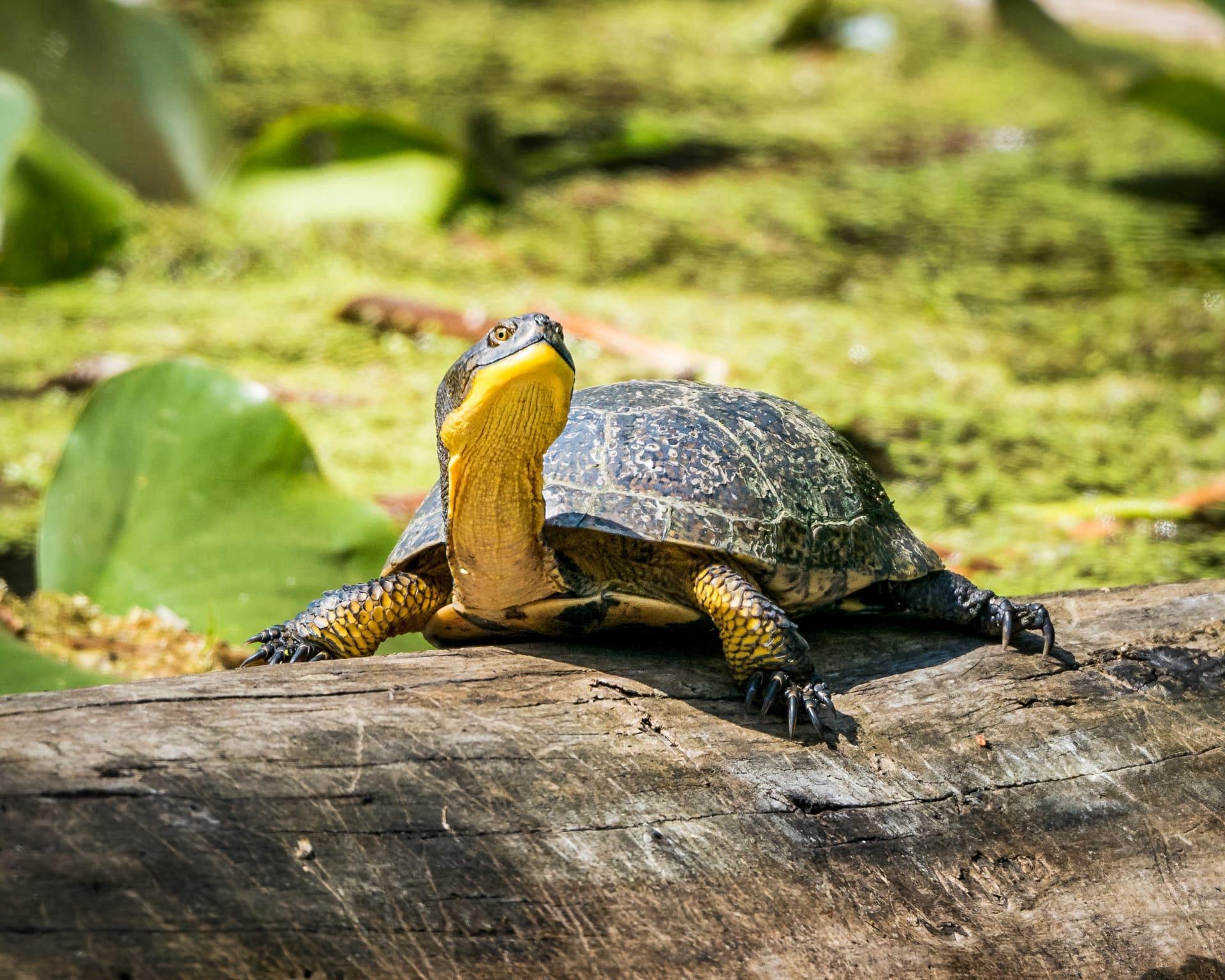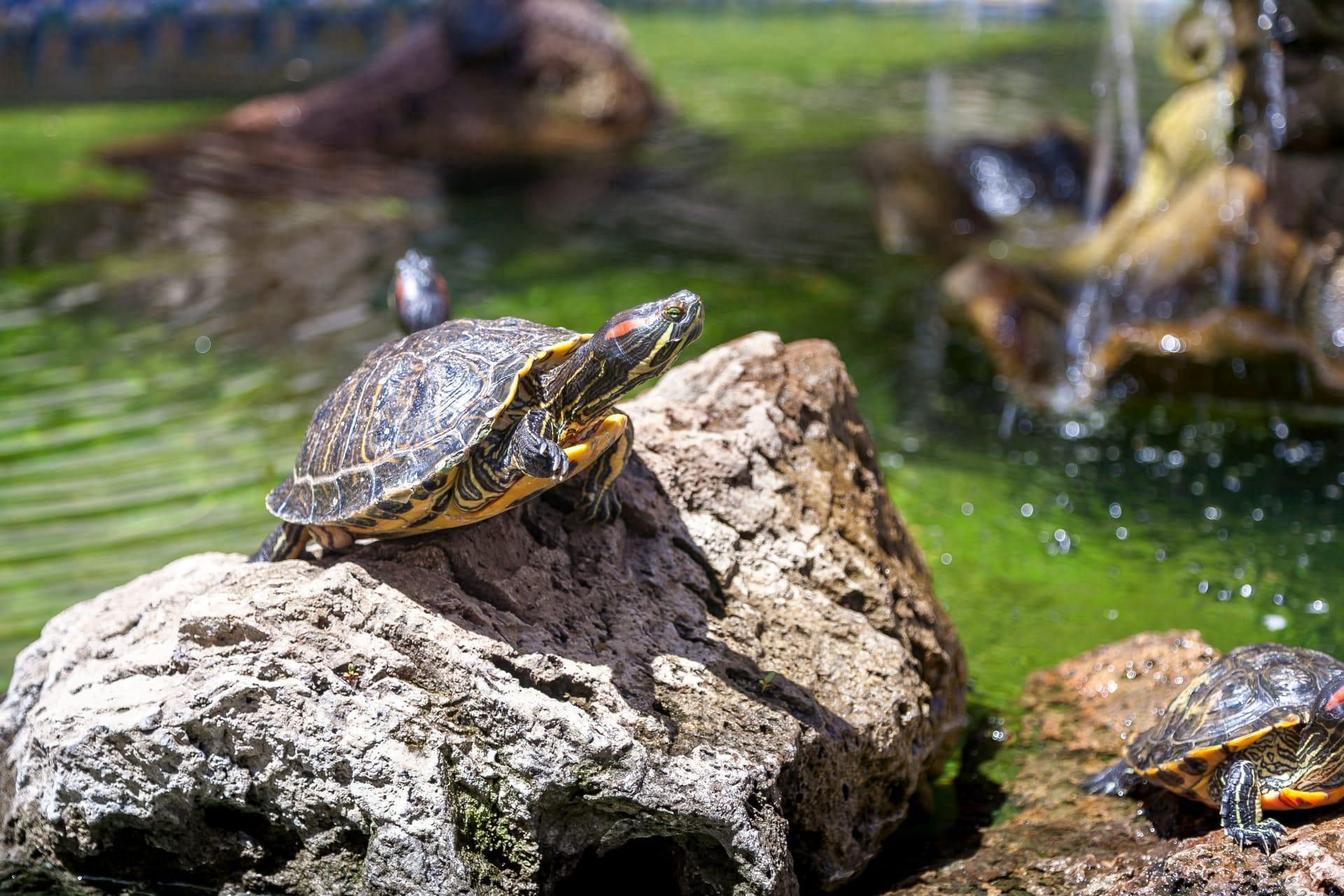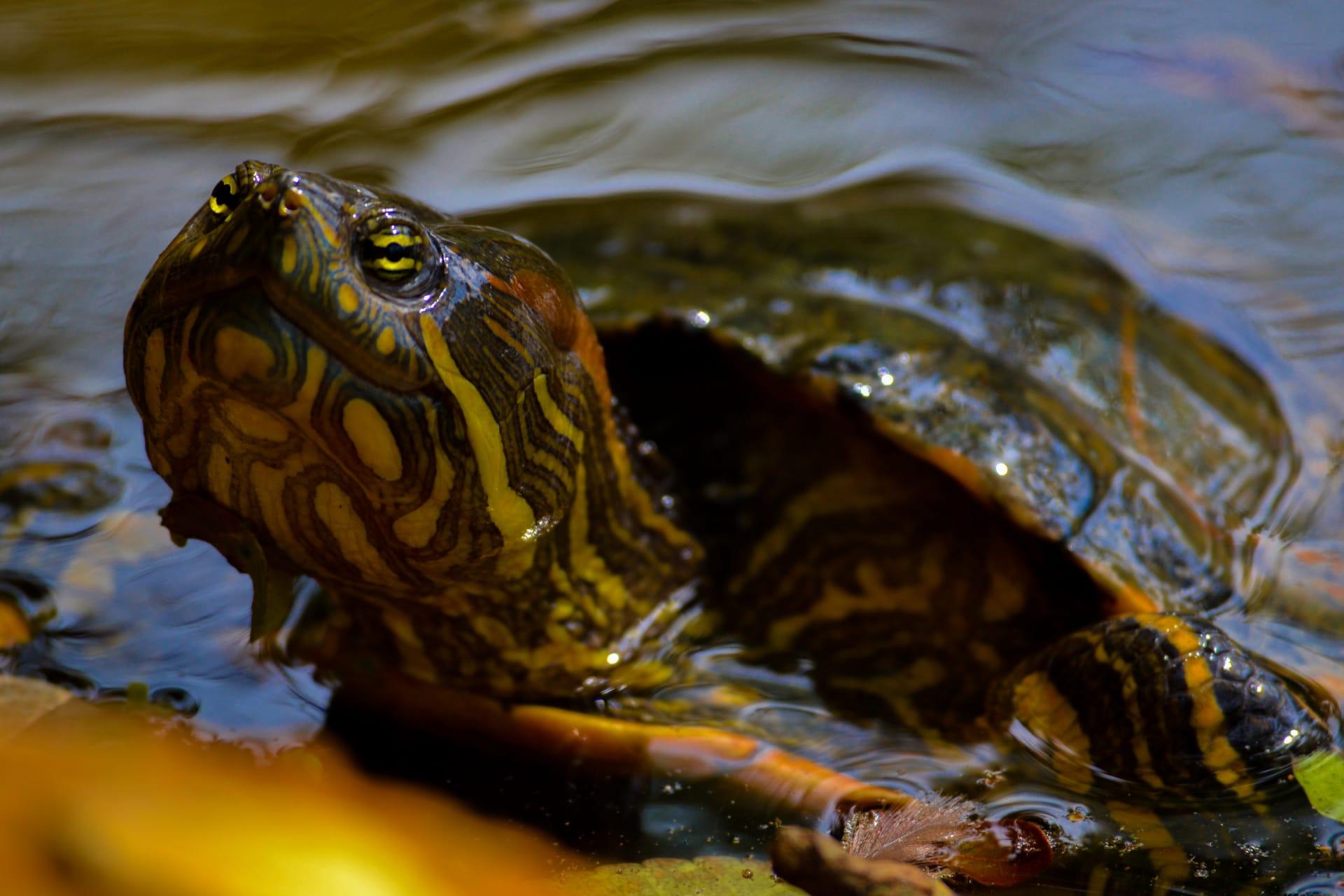Painted Turtle Characteristics
- Home /
- Mini Encyclopedia /
- Animal /
- Painted Turtle Characteristics
1
Painted turtles, scientifically known as Chrysemys picta, are a vibrant addition to North America's freshwater habitats. Their most striking feature is their smooth, colorful shell which can span between 4 to 10 inches in length. These shells are a canvas of red, green, and yellow markings against a darker background, making each turtle a unique masterpiece of nature. Remarkably, painted turtles can live for a long time, with lifespans stretching up to 40 years in the wild, and sometimes even longer in captivity.
One of the most fascinating organs of the painted turtle is its bladder. This isn't just any ordinary bladder—it's a survival tool! Painted turtles use their bladder in a unique way during winter. They can breathe through it! This process, called cloacal respiration, allows them to extract oxygen directly from the water, enabling them to stay submerged under ice-covered waters for months during brumation, a hibernation-like state.

2
Question: Why don’t painted turtles suffocate under ice in winter?
Answer: Painted turtles have a remarkable adaptation for surviving the harsh winters. When ponds and lakes freeze over, these turtles enter a state of brumation at the bottom of the water bodies. Here's the cool part: they switch to a special kind of respiration using their cloacal bursae—tissue in their rear end that absorbs oxygen from the water. This process allows them to sustain life without surfacing for air for months, a perfect adaptation to their frozen, oxygen-poor environments.

3
Painted turtles are quite the athletes of the turtle world. They are known for their agility in water, easily gliding and maneuvering with their webbed feet. While they are not the fastest swimmers, reaching speeds only up to 1 to 2 miles per hour, their swimming skills are more about grace than speed. On land, however, they are less adept, moving slowly and awkwardly.
In terms of feeding, painted turtles are omnivorous, meaning they eat a mix of plant and animal matter. Their diet includes aquatic vegetation, small fish, insects, and even dead animal matter. Younger painted turtles tend to eat more animal protein, which is crucial for their growth. As they grow older, they shift towards a more herbivorous diet. Their sharp beaks play a crucial role in catching and tearing their food.

4
The habitat of painted turtles is closely linked to their need for basking and aquatic environments. They thrive in slow-moving fresh waters like ponds, marshes, and the edges of lakes and rivers. These areas provide ample sunlight for basking—a vital activity for regulating their body temperature and metabolism. Painted turtles are also dependent on these aquatic habitats for food and protection from predators.
When it comes to reproduction, painted turtles have a fascinating ritual. Mating occurs in the water, typically in spring or autumn. Females then venture on land to lay eggs, often traveling considerable distances to find suitable nesting sites. They lay 4 to 15 eggs, which are incubated for about 70 to 80 days. Temperature plays a crucial role in determining the sex of the hatchlings; warmer temperatures generally produce female offspring, while cooler temperatures result in males.

5
Book: "The Painted Turtle: A Natural History" by James R. Spotila. Published in the United States in the 1990s, this book offers an in-depth exploration of the life and ecology of painted turtles. Spotila, a renowned herpetologist, delves into their behavior, habitat, and the environmental challenges they face. The book is rich in scientific detail yet accessible, making it an excellent resource for both enthusiasts and researchers.
Book: "Life in a Shell: A Physiologist's View of a Turtle" by Donald C. Jackson. This book, hailing from the early 2000s, is not exclusively about painted turtles but includes them in its broader examination of turtle biology. Jackson, a respected physiologist, explores the unique physiological adaptations of turtles, including their shells and respiratory systems. While the book is more technical, it provides a fascinating insight into the survival strategies of turtles, including the painted turtle.